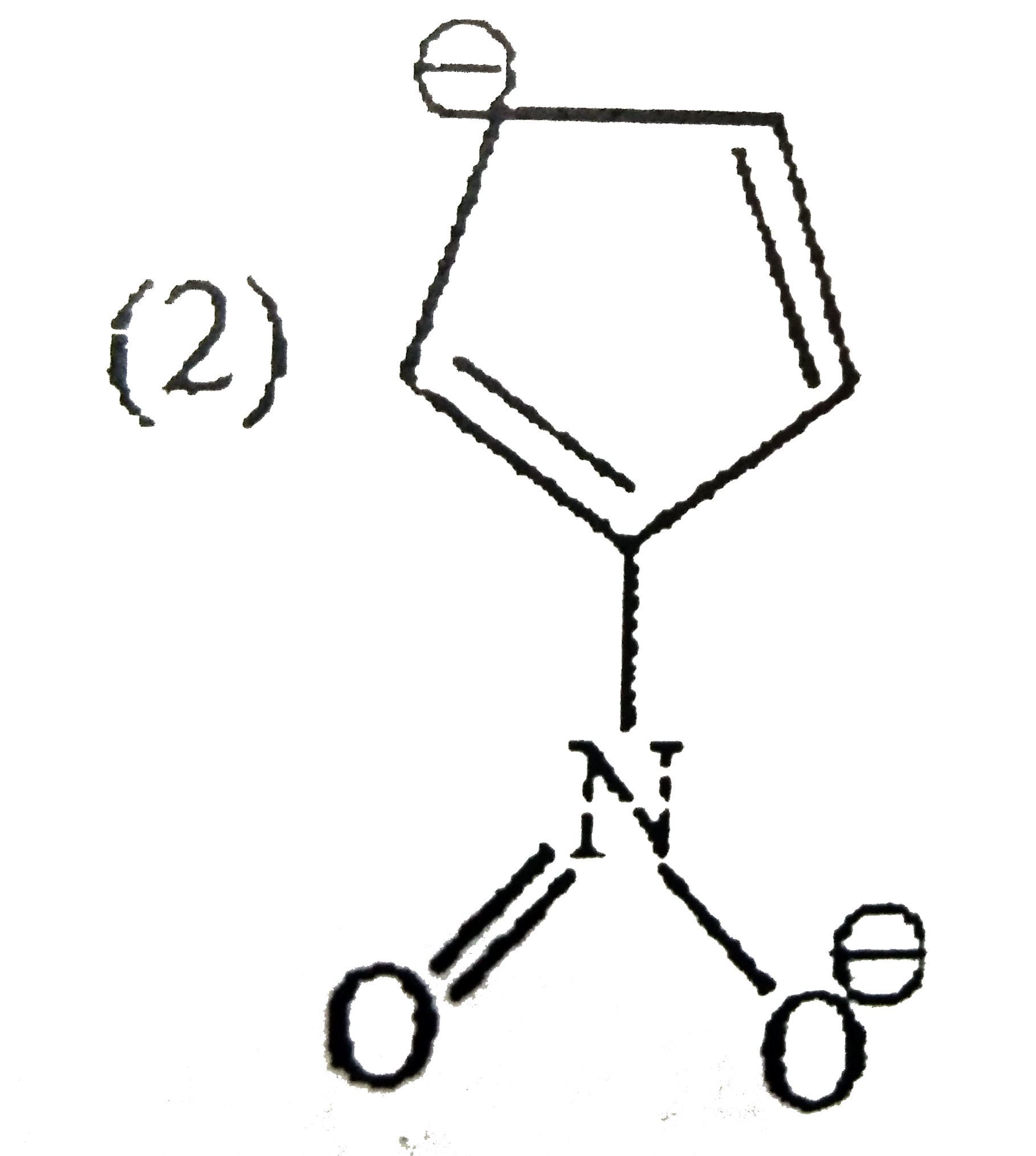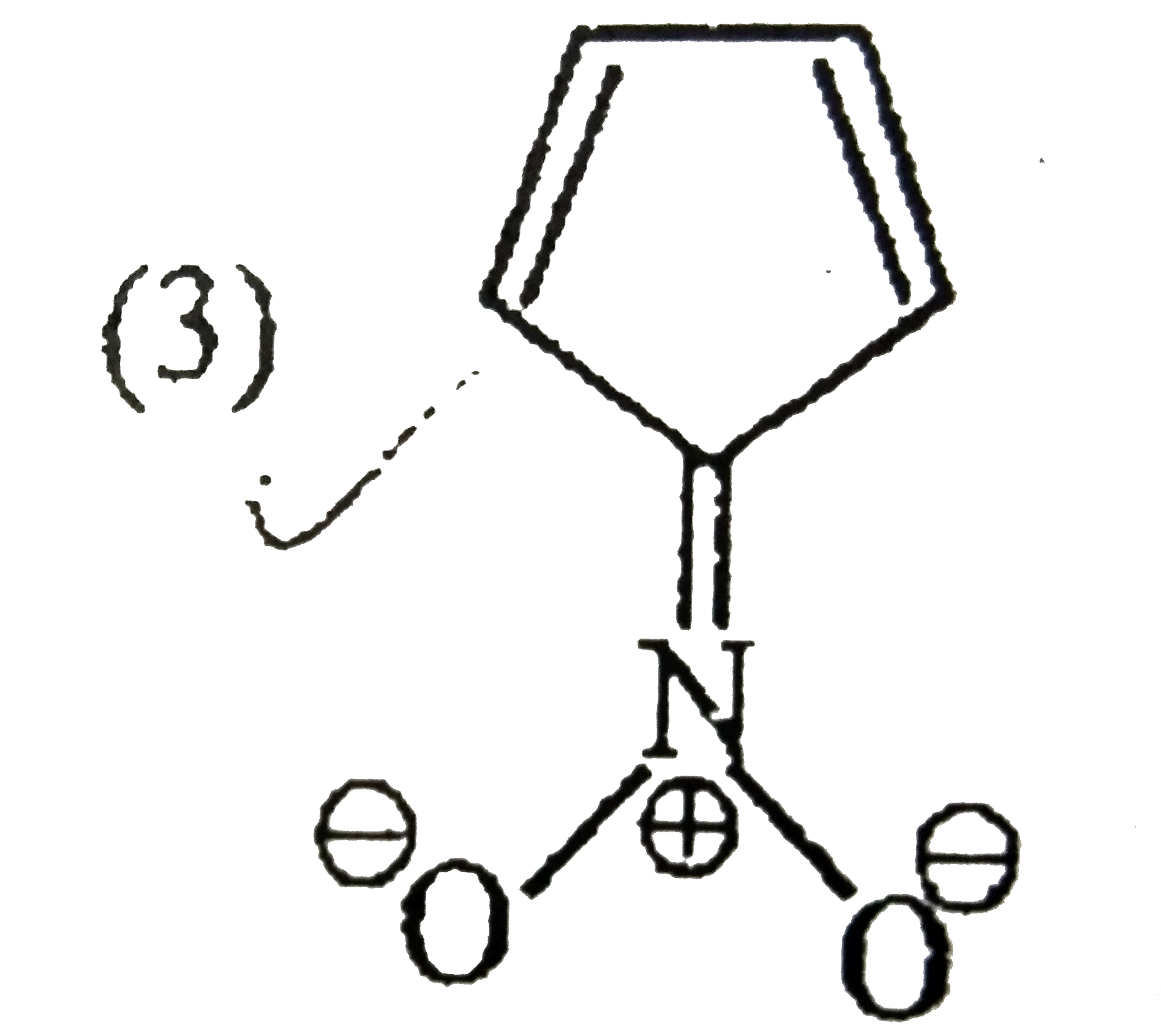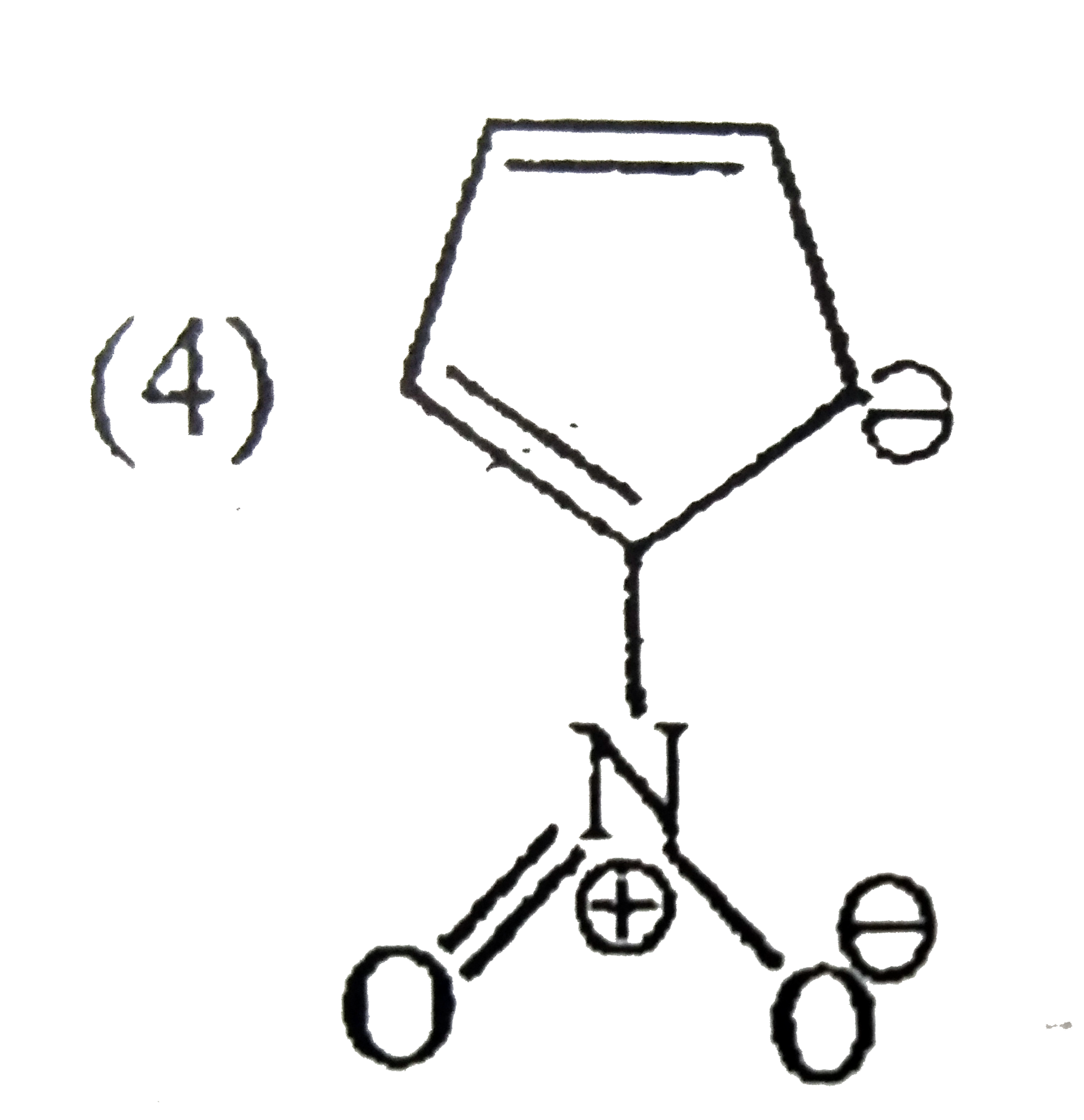Which resonating structure of vinyl chloride is least stable :-
CH2−CH−Cl
⊕CH2−CH−⊕Cl
CH3−CH−Cl
All have equal stability
The correct Answer is:C
To determine which resonating structure of vinyl chloride is least stable, we need to analyze the structures based on two main criteria: the completeness of the octet and the distribution of charges. Let's break down the solution step by step.
1. Identify the Resonating Structures:
Vinyl chloride (C2H3Cl) can have several resonating structures. We need to draw the possible structures to analyze their stability.
2. Check the Octet Rule:
For each resonating structure, we need to check if all atoms (especially carbon) have a complete octet (8 electrons).
- Carbon can form a maximum of 4 bonds.
- Each hydrogen can form 1 bond.
- Chlorine can form 1 bond and has 7 valence electrons.
3. Count the Bonds:
For each structure, count the number of bonds formed by each atom:
- In the first structure, if we have a double bond between the two carbons and single bonds to hydrogen and chlorine, we can count the total number of bonds.
- Repeat this for each resonating structure.
4. Evaluate Charge Distribution:
- If there are any charges in the structures, determine if they are located on electronegative or electropositive atoms.
- A negative charge on an electronegative atom (like chlorine) is more stable than on a carbon atom.
5. Stability Assessment:
- Structures where all atoms have complete octets and proper charge distribution are more stable.
- Compare the stability of the structures based on the above criteria.
6. Identify the Least Stable Structure:
- After analyzing all structures, identify which one has an incomplete octet or has unfavorable charge distribution. This structure will be the least stable.
Conclusion:
Based on the analysis, the resonating structure that has an incomplete octet (specifically on a carbon atom) and potentially unfavorable charge distribution is the least stable. Therefore, the answer is that the third resonating structure is the least stable.
Vinyl chloride (C2H3Cl) can have several resonating structures. We need to draw the possible structures to analyze their stability.
For each resonating structure, we need to check if all atoms (especially carbon) have a complete octet (8 electrons).
- Carbon can form a maximum of 4 bonds.
- Each hydrogen can form 1 bond.
- Chlorine can form 1 bond and has 7 valence electrons.
For each structure, count the number of bonds formed by each atom:
- In the first structure, if we have a double bond between the two carbons and single bonds to hydrogen and chlorine, we can count the total number of bonds.
- Repeat this for each resonating structure.
- If there are any charges in the structures, determine if they are located on electronegative or electropositive atoms.
- A negative charge on an electronegative atom (like chlorine) is more stable than on a carbon atom.
- Structures where all atoms have complete octets and proper charge distribution are more stable.
- Compare the stability of the structures based on the above criteria.
- After analyzing all structures, identify which one has an incomplete octet or has unfavorable charge distribution. This structure will be the least stable.
Based on the analysis, the resonating structure that has an incomplete octet (specifically on a carbon atom) and potentially unfavorable charge distribution is the least stable. Therefore, the answer is that the third resonating structure is the least stable.
Topper's Solved these Questions
- SOME BASIC PRINCIPLES AND TECHNIQUESBOOK - NARAYNACHAPTER - SOME BASIC PRINCIPLES AND TECHNIQUESEXERCISE - EXERCISE - I (H.W) (TYPES OF REACTION AND MECHANISM)
2 Videos
- SOME BASIC PRINCIPLES AND TECHNIQUESBOOK - NARAYNACHAPTER - SOME BASIC PRINCIPLES AND TECHNIQUESEXERCISE - EXERCISE - I (H.W) (METHODS OF PURIFICATION OF ORGANIC COMPOUNDS)
17 Videos
- SOME BASIC PRINCIPLES AND TECHNIQUESBOOK - NARAYNACHAPTER - SOME BASIC PRINCIPLES AND TECHNIQUESEXERCISE - EXERCISE - I (H.W) (CLEAVAGE OF BONDS AND ELECTRONIC DISPLACEMENTS )
7 Videos
- SOME BASIC CONCEPTS OF CHEMISTRYBOOK - NARAYNACHAPTER - SOME BASIC CONCEPTS OF CHEMISTRYEXERCISE - EXERCISE - IV
43 Videos
- STATES OF MATTERBOOK - NARAYNACHAPTER - STATES OF MATTEREXERCISE - A & R TYPE QUESTIONS
16 Videos
Similar Questions
Knowledge Check
Which is least stable ?
ACH3BCH2−CH3CCH3−CH−CH3D(CH3)3CWhich resonating structure is most stable?
A B
B C
C D
D
Which of the following resonating structures of 1-methoxy-1,3-butadiene is least stable ?
AΘCH2−CH=CH−CH=⊕O−CH3BCH2=CH−ΘCH−CH=⊕O−CH3CCH2=CH−⊕CH−ChΘCH−O−CH3DCH2=CH−ΘCH−⊕CH−O−CH3
Which of the following resonating structures of 1-methoxy-1,3-butadiene is least stable ?
View SolutionWhich of the following resonating structures of 1-methoxy-1,3-butadiene is least stable ?
View SolutionFor 1 - methoxy- 1,3- butadience ,which of the following resonating structure is the least stable ?
View SolutionWhich molecule is least stable?
View SolutionWhich of the following resonating structure of 1-methoxy - 1,3-butadiene is least stable?
View Solution
